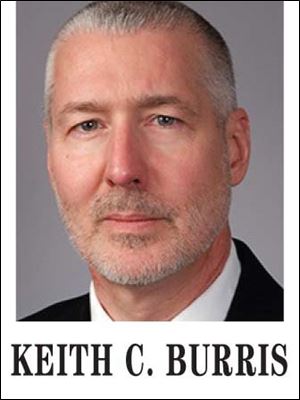
COMMENTARY
Bracing for the upcoming heroin wave
12/5/2013
John Edwards runs UMADAOP — Urban Minority Alcohol Drug Abuse Outreach and Prevention of Ohio. It is Toledo’s oldest drug treatment and prevention program.
Mr. Edwards keeps two pictures of Billie Holiday on his wall. One is of Billie before her descent into heroin addiction. The second is of the singer not long before her death — when she was at the bottom of the pit of addiction and fully in the grip of the drug. In hell.
Mr. Edwards is a jazz fan. He also likes to remind people of how heroin can ravage a body and soul. He has fought in the drug wars for a generation. He lived through the crack cocaine infestation of the 1980s and fears a contagion as widespread is coming with heroin.
Are you ready for heroin as a drug of choice in middle America? Heroin.
Mr. Edwards, and others in the treatment and addiction business, want to build a fire wall for what they believe will be an assault of illegal commerce and lethal accidents. Worse than the ’80s. But it will take money.
So far, state government seems rather uninterested. The legislature is run by people who believe government can’t alleviate social problems and should not try. And city governments don’t yet seem to have gotten the wake-up call.
The heroin epidemic has already hit rural Ohio — Athens County, for example. If it hits Lucas County with the same ferocity, we are in deep trouble.
The root of the problem is prescription drugs. The same United States that proclaims the drug war, urges the young to “just say no,” and invests in DARE programs and DARE officers (rightly), is addicted to painkillers. Massively addicted. This addiction problem crosses all boundaries of age and race and income. The old, the middle age, the middle class — all have significant numbers of their cohorts hooked on OxyContin, Vicodin, Dilaudid, and the like.
These are synthetic narcotics. Indeed, we know that even some cold remedies can be. Pseudoephedrine can be used to make the highly addictive methamphetamine, also known as crystal meth.
All these narcotics are prescribed in large numbers, for fairly minor surgeries and procedures. And they are prescribed widely — by dentists as well as physicians.
They are addictive. People get hooked on them. And heroin is cheaper. Much cheaper. So economics is driving the epidemic.
Mr. Edwards says the new addict is not a street person. He is middle class and respectable. He is your neighbor. The “drug problem” today is incredibly varied, diverse, and widespread. And, including the biggest killer drug of all, alcohol, it further complicates other social problems — domestic abuse to name one, and safety in public housing to name another.
Moreover, the new drug trade, stronger than before Nancy Reagan and 25 years of a losing “war,” no longer regards children as off-limits.
So what do we do?
Attorney General Mike DeWine has formed a special unit in his office, and that's a good thing. Ohio is already losing 11 lives a week to heroin.
In Toledo, we need to be pro-active with education, enforcement, and prevention. We also need at least one new residential program for men.
All this will cost some money.
But if we let the coming heroin epidemic get ahead of us, it will cost a whole lot more — even more money, and lives.
Keith C. Burris is a columnist for The Blade.
Contact him at: kburris@theblade.com or 419-724-6266.